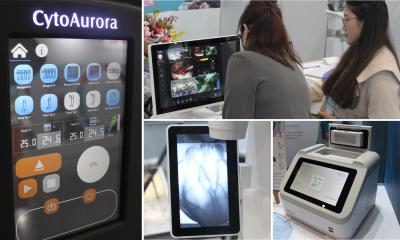Hard-to-heal wounds
"What is the real cost of treatments?" asks Martin Steinberg
In `Hard-to-heal wounds: a holistic approach´ a paper produced by the European Wound Management Association (EWMA), the authors analyse the calculation of treatment costs, based on international examples, and point out problems associated with a clear definition of the term treatment costs. They also emphasise the importance of the addition of the term holistic approach.

‘While there tends to be a lot of emphasis on the biological factors that influence delayed wound healing, the related psychosocial factors so far have been largely ignored. This position paper now addresses this imbalance.’ There are now clear indications that there is a close connection between anxiety and depression, lack of sleep, socio-economic status, injuries and delayed wound healing.
Wrong financial incentives
In their essay ‘Economic burden of hard-to-heal wounds’ Romanelli et al. provide an insight into the Italian healthcare system. As in many countries, the amount of financial reimbursement Italian hospitals receive for in-patient treatment depends on the length of stay – the quicker the discharge the more money a hospital receives. Thus a long in-patient stay costs the hospital money, with reimbursement from funding organisations decreasing daily. The danger of premature discharge, or even rejection, of patients increases. However, the situation is different in Italian care homes, which each receive a set day rate for hard-to-heal wounds patients; individual care procedures are reimbursed separately. This can lead nurses to change dressings daily, which often does not correspond with best practice in wound care.
The regulation of financial compensation for patient care in their own homes is better; providers receive a fixed sum per patient and care provided over a 60-day period – without the need to visit patients daily.
A comparison of diabetes-related foot lesions in patients in the Netherlands and California, USA, shows misguidance based on a mistaken cost analysis: Whereas the length of hospital stay was significantly longer in the Netherlands, in California the number of so-called major amputations was significantly higher. These differences can mainly be traced back to different financing and reimbursement models. This has an important impact on the motivation to cut costs by discharging patients prematurely, warn the EWMA study authors. It is regrettable that the reimbursement systems in some countries obviously abet amputation through favouring shorter hospital stays and allowing shorter times for ‘healing’.
Prevention and early intervention can slice costs
An example from the USA proves what kind of costs hard-to-heal wounds actually and ultimately cause. According to data provided by EWMA scientists, around 25% of the estimated 20 million US diabetics will suffer diabetic foot ulcers (DFU) at some point in their lives. Around half of these DFUs become infected and every fifth leads to amputation of a lower extremity (LEA). New figures show that the DFUs and amputations cost the US healthcare system about $30 billion annually, and that complications with the lower extremities (e.g. hard-to-heal wounds) constitute a fifth of the entire cost of diabetes treatments. In contrast, a study by the working group headed by Pecoraro showed that ‘in more than 85% of diabetes-
related LEAs there was an identifiable and potentially avoidable cause’. In this context the EWMA authors state that there is not enough focus on, and research funds for, preventative measures in the USA.
However, an examination of the actual treatment costs is not without problems. Romanelli and co-authors say only few studies on wound care contain comprehensive cost-effectiveness analyses: Most studies concentrate on the estimated, direct medical costs of wound treatment, but not the indirect costs caused by loss of productivity, costs to individual patients and relatives and loss of quality of life. This is why the estimated costs are often deceptively low.
Figures from Sweden show that a curtate analysis of the treatment process often leads to mistaken results. For the model relating to hard-to-heal diabetic foot ulcers (DFU), the number of surgical interventions, hospital stays and time required until healing were identified as the most important cost drivers. The costs of a minor amputation (foot only) in Sweden were estimated at around 24,000 euros. For larger amputations of the lower extremities (above the ankle) the costs were listed as being around 36,000 euros – with 77% of costs arising after the operation. The amputation was considered as costly as the result of its consequences, i.e. the necessary further care and institutional treatment were taken into consideration as well.
Consequently, the authors of the EWMA position paper demand that patients monitored for cost analysis studies should in future be observed up until a specific end point, such as until complete healing or the completion of successful rehabilitation. This approach would also put the use of new treatment procedures and innovative wound dressings into perspective: ‘Although many of the new technologies and dressings which are used for the treatment of hard-to-heal wounds are more expensive than conventional treatment their use can be more cost effective if they lead to more effective and faster healing,’ argue the experts of the EWMA. Their demands for the future therefore read: ‘Significant efforts are required to standardise the criteria for cost analysis which can be used for the identification of the most economically effective ways of treatment of hard-to-heal wounds and for the support of helpful comparisons between different treatment protocols and healthcare systems.’
* Founded in 1991, the European Wound Management Association promotes the advancement of education and research into native epidemiology, pathology, diagnosis, prevention and management of wounds of all aetiologies. Full details: www.ewma.org
01.07.2009





